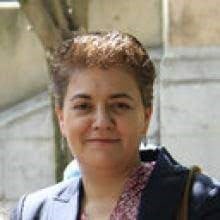Mathematics and Its Applications in Science and Engineering II
A special issue of Mathematics (ISSN 2227-7390). This special issue belongs to the section "Engineering Mathematics".
Deadline for manuscript submissions: closed (30 November 2022) | Viewed by 22078
Special Issue Editors
Interests: cryptography; algorithms; applied mathematics; applied and computational mathematics
Special Issues, Collections and Topics in MDPI journals
Interests: matrix theory; number theory; graph theory; combinatorics
Special Issues, Collections and Topics in MDPI journals
Interests: applications of probability and statistics; operational research; numerical analysis and numerical methods; mathematical and informatics education based on e/m/u-Learning
Special Issues, Collections and Topics in MDPI journals
Interests: network optimization; image processing; research on new methods to present mathematics to students
Special Issues, Collections and Topics in MDPI journals
Interests: Runge–Kutta methods for nonlinear PDEs; approximation theory; mathematical education
Special Issues, Collections and Topics in MDPI journals
Special Issue Information
Dear Colleagues,
This Special Issue accepts papers about new and innovative implementations of mathematics in science and engineering, i.e., the use of mathematics in non-mathematical contexts is considered. This proposal wants to publish results from mathematical applications, such as the use of differential equations to model structures, the shape of a machine or the growing of a population, or to assure information security through cryptographic protocols.
The added value is that it will include results from recent years, which will allow readers to keep up to date.
In recent years, mathematical education has changed and is performing a different role in undergraduate and graduate degrees. Recent changes in the educational paradigm demands a comprehensive revision of the teaching and learning methodologies. The innovation in educational contexts should reach a consensus in the way mathematical competencies are evaluated. In this Special Issue, we try to integrate different methodologies for mathematical education, and how they are evaluated.
Potential topics include, but are not limited to:
- Mathematical modeling for science and engineering applications.
- Optimization and control in engineering applications.
- Numerical methods for science and engineering applications.
- Mathematics in engineering and sciences studies.
- Good practices in motivating students for learning Mathematics during university studies.
- Assessing mathematics using applications and projects.
- Teaching and assessment methodologies in Science and Engineering.
Prof. Dr. Araceli Queiruga-Dios
Dr. Fatih Yilmaz
Dr. Ion Mierlus-Mazilu
Prof. Dr. Deolinda M. L. Dias Rasteiro
Prof. Dr. Jesús Martín Vaquero
Guest Editors
Manuscript Submission Information
Manuscripts should be submitted online at www.mdpi.com by registering and logging in to this website. Once you are registered, click here to go to the submission form. Manuscripts can be submitted until the deadline. All submissions that pass pre-check are peer-reviewed. Accepted papers will be published continuously in the journal (as soon as accepted) and will be listed together on the special issue website. Research articles, review articles as well as short communications are invited. For planned papers, a title and short abstract (about 100 words) can be sent to the Editorial Office for announcement on this website.
Submitted manuscripts should not have been published previously, nor be under consideration for publication elsewhere (except conference proceedings papers). All manuscripts are thoroughly refereed through a single-blind peer-review process. A guide for authors and other relevant information for submission of manuscripts is available on the Instructions for Authors page. Mathematics is an international peer-reviewed open access semimonthly journal published by MDPI.
Please visit the Instructions for Authors page before submitting a manuscript. The Article Processing Charge (APC) for publication in this open access journal is 2600 CHF (Swiss Francs). Submitted papers should be well formatted and use good English. Authors may use MDPI's English editing service prior to publication or during author revisions.









